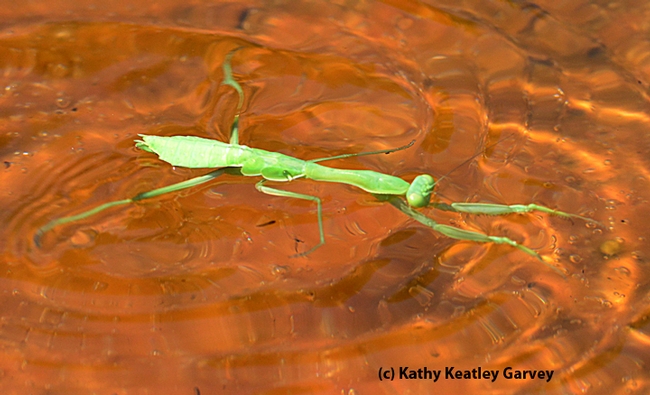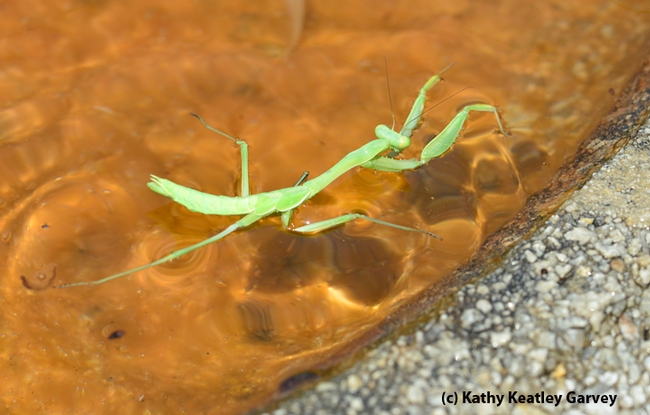
It's true. You can't put a limit on anything.
The praying mantis, aka Lean Green Machine, dived off the high board, did a reverse 3-1/2 double somersault with 1/2 twist and swam to the edge of the Olympic-sized pool. He gingerly lifted himself out of the water as a cheering spectator handed him a bouquet of red roses.
Well, it didn't happen quite that way.
The praying mantis entered our shallow birdbath—maybe a baptismal ceremony?—and using his best dog-paddle, praying-mantis stroke, swam across the birdbath. Then he leaped onto a yellow rose occupied by a bee.
Maybe he was simply “wetting” his appetite (er, “whetting” his appetite).
Fish swim. Crocodiles swim. Snakes swim. Dogs swim. Cats swim. And praying mantids swim.
Praying mantids are observant critters. They know where to go for breakfast, lunch and dinner and a few snacks in between. A bee garden is their supermarket, a veritable one-stop shopping experience. No carts, credit cards or courtesy calls needed.
Praying mantids are so camouflaged that you rarely see them. But when you're watering the plants in the early morning, a spray of water will prompt them to emerge. Displeased and disgruntled. Peeved and perturbed. Kicking and kvetching. This is no "Good-morning-sunshine!" kind of greeting.
In our family bee garden, they perch on the Mexican sunflower (Tithonia) and lie in wait for prey. You'll see them swiveling their heads at 180 degrees as they patiently wait to ambush an unsuspecting bee or butterfly. Their spiked forelegs ensure there's no escape.
We've all heard that a female praying mantis will sometimes behead and eat her mate. We've all heard that the hundred or so nymphs that hatch from the egg case will eat their brothers and sisters. They've been doing this for 150 million years or so.
Some teachers keep praying mantids in their classroom. Some folks keep praying mantids as pets. We think we'll train ours to be the insect version of Olympic swimmer Michael Phelps, who medaled 22 times, 18 of them gold.
The Lean Green Machine already knows how to do the one-meter butterfly. That would be the Western tiger swallowtail (Papilio rutulus) and the skipper (Hylephila phyleus).
Attached Images:


